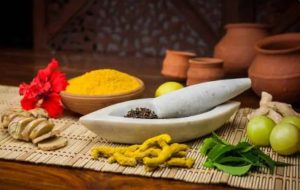
When it comes to health, Ayurveda, an ancient Indian medical practise, advocates for an integrated way of being that includes all aspects of one’s being.
It is important to Ayurvedic theory that foods be classified as either “hot” or “cold” according to their properties and effects on the body. This categorization is not based on food temperature, but rather on how it affects the body’s vata, pitta, and kapha doshas. While “cold” foods have a cooling impact, reduce inflammation, and help balance excess heat, “hot” foods boost metabolism, stimulate digestion, and produce heat. By learning these concepts, we can use Ayurvedic knowledge to better our health and well-being through the foods we eat.
Hot Foods
In Ayurveda, “hot” foods are those that stimulate the fire element (pitta) by increasing the body’s temperature. These foods are known for boosting up your body’s metabolic rate, digestive system, and blood flow. Spicy foods like chilli peppers, ginger, and garlic are examples of hot foods, as are alcoholic beverages, caffeinated beverages, and some acidic fruits. If you have a slow digestive system or are mostly kapha, eating spicy foods in moderation can help. However, imbalances brought on by excessive consumption might result in unpleasant symptoms including acid reflux, indigestion, and inflammation.

Cold Foods
When it comes to regulating the body’s fire element (pitta), “cold” foods are recommended by Ayurveda. Consuming these meals can help slow down your metabolism, ease digestion, and lower your core temperature. Cucumbers, watermelons, coconuts, mint, and some types of yoghurt are just few of the cool foods that you can get in the supermarket. People who have too much heat, or pitta dosha, in their bodies can benefit from eating cold meals in moderation. However, consuming too much of it might cause digestive issues, gas, and lethargy. According to Ayurveda, eating both warm, cooked foods (which aid digestion and absorption) and cold, raw foods (which promote equilibrium in the body) is essential.
How To Balance
According to Ayurveda, eating a balanced diet of hot and cold foods requires knowledge of one’s individual constitution (dosha) and the body’s current state of balance or imbalance. Foods that are cooling and relaxing are especially important for those whose primary constitution is fire (pitta). Those who are predominately vata (cool) should, on the other hand, prioritise warm foods. The body is kept in balance by eating a combination of meals with contrasting properties, such as hot and cold. In order to achieve optimal health and well-being, Ayurveda also places an emphasis on eating consciously, eating seasonally, and modifying one’s diet as necessary.




 Driving Naari Programme launched in Chandigarh
Driving Naari Programme launched in Chandigarh






























